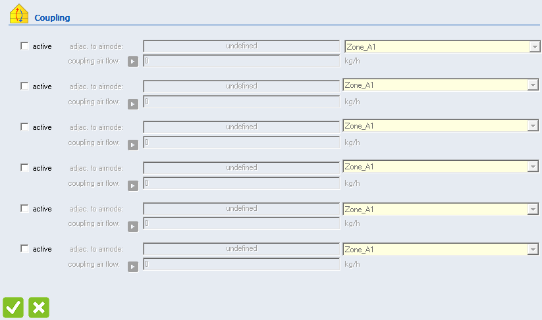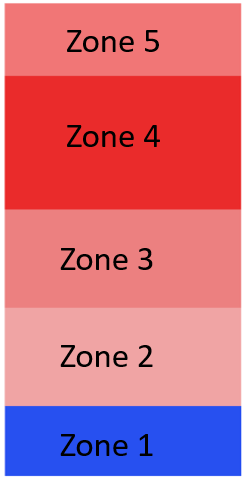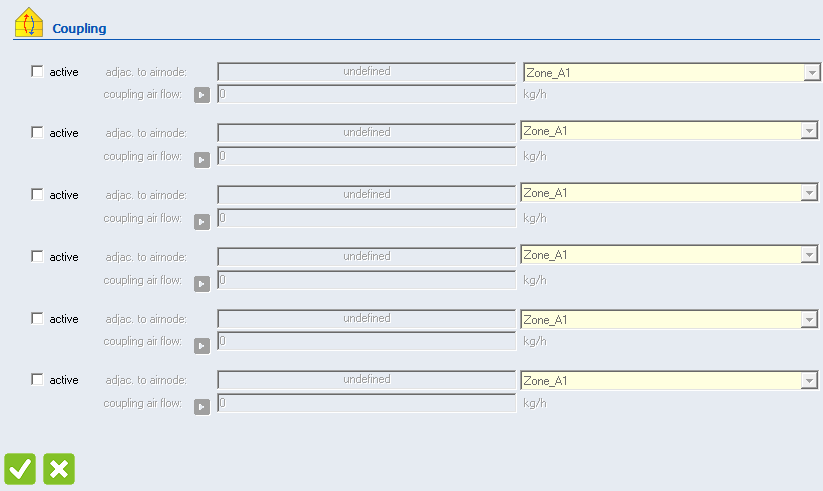
or through surface definition, adjacent coupling air flow (if the adjacent surfaces are not deleted) ?

Loïc,
The best way to address airflow within a building is to couple your Type56 simulation either with TRNFlow or CONTAM (Type97). The basic idea is that you build a parallel model to your Type56 containing information about the airflow openings between the airnodes (a radiation zone can contain multiple airnodes, especially where there is an atrium like you have described). TRNFlow or CONTAM then take the air node temperatures as well as the wind speed and geometry of the building and determine the amount of air flow that results between the air nodes. Large horizontal openings are challenging because both TRNFlow and CONTAM treat air flow through a horizontal opening as unidirectional. Still, it is by far the most rigorous way of treating the situation.
kind regards,
David
On 1/13/2023 8:29 AM, Loic Tachon via TRNSYS-users wrote:
Dear Trnsys community,
I want to simulate the stack effect in a high room with high thermal gain.
For this, I have 1 zone and 5 thermal air nodes in the z direction to get the temperature at several heights.
How can I do this and avoid that TRNSYS see ceiling between the zone ? Do I need to delete the horizontal surface for zone 2-3-4 ? Or do I put mass less horizontal surface ?
As Well, how do I do the cross flow ventilation ? Do I use the couple mass flow between zones ?
or I put a coupling air flow (same that natural ventilation mass flow) for the horizontal surface ?
Thanks a lot.
Best regards,--
Dr. Loïc Tachon(+33) 6 7440-0536 (France)
_______________________________________________ TRNSYS-users mailing list TRNSYS-users@lists.onebuilding.org http://lists.onebuilding.org/listinfo.cgi/trnsys-users-onebuilding.org-- *************************** David BRADLEY Principal Thermal Energy System Specialists, LLC 3 North Pinckney Street - suite 202 Madison, WI 53703 USA P:+1.608.274.2577 d.bradley@tess-inc.com http://www.tess-inc.com http://www.trnsys.com


